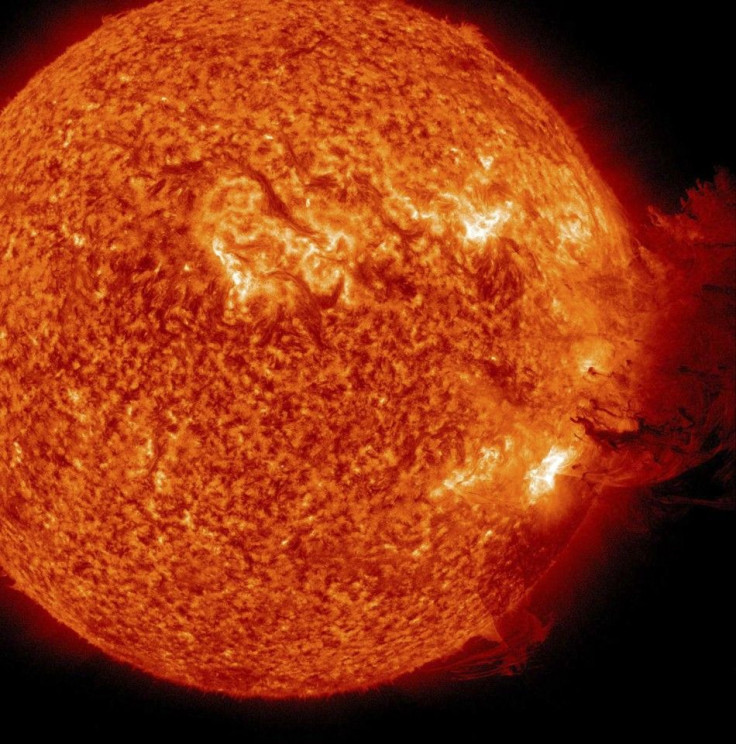Massive Solar Flare to Hit Tuesday Morning: Airplanes Expected to Reroute

A massive explosion on the sun's surface has released a current of charged plasma particles toward Earth, which according to scientists, wouldn't jeopardize life but could disrupt satellite communications briefly. This is the strongest solar radiation storm since 2005.
The threat level to satellites and other hardware in the earth's atmosphere is believed to be manageable, scientists said. However, as a rare precaution, polar flights on Earth are expected to be rerouted, Kathy Sullivan, deputy administrator of National Oceanic and Atmospheric Agency (NOAA), said today at a Meteorological Society meeting in New Orleans, La., according to Space.com.
The charged plasma particles may also interfere or disrupt the navigation system. To reduce the risk of radiation exposure, other airplanes are expected to fly at lower altitudes.
The massive current of plasma particles, traveling uncommonly fast, is expected to make the 93-million-mile trip to Earth in about 34 hours and hit the earth's surface by 9 a.m. EST (1400 GMT) Tuesday, reported the Los Angeles Times.
A warning released by the Space Weather Prediction Center of NOAA said that a solar flare was detected Sunday night which peaked at 7.59 p.m. Pacific time.
SWPC (Space Weather Prediction Center) has issued a Geomagnetic Storm Watch with G2 level storming likely and G3 level storming possible, with the storm continuing into Wednesday, Jan. 25, the NOAA announced on Monday.
A preliminary inspection of SOHO (Solar Heliospheric Observatory)/STEREO imagery suggests that the CME (Coronal Mass Ejection) will deliver a strong glancing blow to Earth's magnetic field on Jan. 24-25 as it sails mostly north of our planet, Space Weather Prediction Center (SWPC) bulletin said.
NASA spokeswoman Kelly Humphries said that the six space-flyers currently working on the orbiting outpost of the International Space Station are not in any danger. The flight surgeons have reviewed the space weather forecasts for the flare and determined that there are no expected adverse effects or actions required to protect the on-orbit crew, Humphries told Space.com in an email.
Flares occur when accelerated charged particles interact with the plasma medium. The frequency of occurrence of solar flares varies from several flares per day to less than one every week. However, large flares that can impact earth are rare and occur at intervals of several years.
Solar flares are classified as A, B, C, M or X, according to the peak flux of 100 to 800 picometer X-rays near Earth, measured in watts per square meter. The current eruption has released a long-duration M9-class flare, which scores slightly below the X-class solar flare - the strongest kind of flare produced by the Sun.
© Copyright IBTimes 2024. All rights reserved.






















